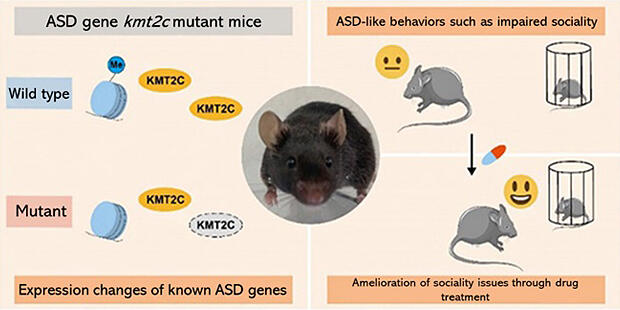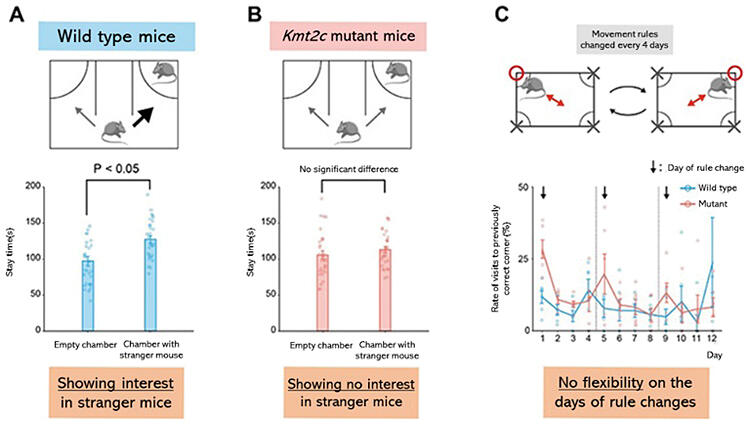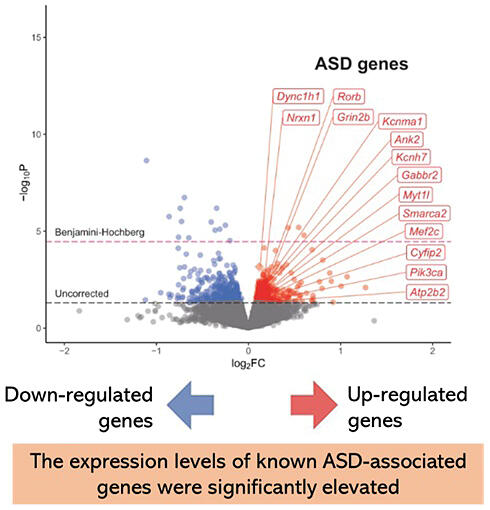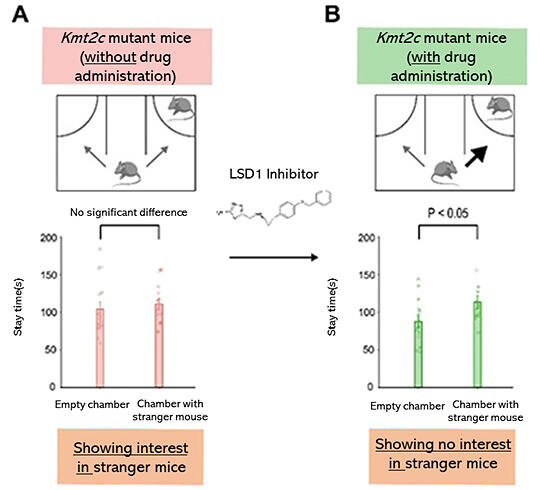A joint research group of scientists from RIKEN, Juntendo University, and the University of Tokyo announced on March 26th that they created a new mouse model of autism spectrum disorder (ASD) and confirmed in experiments using this mouse model that some of the behavioral changes characteristic of the disease could be improved with drug treatment. The model is expected to help better understand ASD, which is on the rise, and develop treatment methods. The research group included Research Scientist Takumi Nakamura and Team Leader Atsushi Takata of the RIKEN Center for Brain Science, Professor Tadafumi Kato of Juntendo University Graduate School of Medicine, and Professor Takashi Tsuboi of the Graduate School of Arts and Sciences at the University of Tokyo.

Provided by RIKEN
ASD is a developmental disorder characterized by difficulties with social communication skills and empathy, limited interests, and obsessive behaviors and has been on the rise in recent years. According to the Ministry of Health, Labor and Welfare, it affects up to 1% of the population. Although many genetic factors are involved, patients' behavioral characteristics are diverse, and it is important to provide medical care and educational support appropriate to characteristics of individual patients.
According to RIKEN and the research collaborators, a recent epidemiological study in the United States has shown that 2.8% of 8-year-old children were diagnosed with ASD, and a variety of ASD-associated genes have been identified.
Nakamura's joint research group first focused on the "KMT2C gene," which is considered to be a promising ASD-associated gene. They successfully created a new mouse model of ASD that lacks this gene (KMT2C mutant mice), of which relationship to symptoms has not been well understood, while its involvement in ASD has been suggested.
Then, they conducted experiments to compare behavioral changes of the ASD model mice from wildtype mice. The data showed a marked tendency of ASD mice to lack interest in cages with unfamiliar mice and flexibility to adapt to changing rules about behavioral patterns in which the corner with access to drinking water was changed daily. This newly created mouse model was confirmed to be effective for studying the behaviors, symptoms, and other phenotypes of humans with ASD.
Moreover, in the brains of model mice, various ASD-associated genes other than KMT2C were expressed, and diverse proteins based on respective genes were synthesized. The research group believes that the expression of these ASD-associated genes may be related to symptoms.

Provided by RIKEN

Provided by RIKEN
Furthermore, the joint research group conducted an experiment in which the "histone demethylase (LSD1)" inhibitor "vafidemstat," a substance thought to counteract the effects of KMT2C gene deficiency, was administered to model mice in drinking water for 4 weeks. The research group found that some ASD-specific behaviors were improved and ASD-associated gene expression levels, which were elevated in model mice, were decreased.
Nakamura's group believe that the LSD1 inhibitor vafidemstat has potential as a drug to treat ASD and some other neuropsychiatric disorders. The research results were published in the electronic edition of the British scientific journal Molecular Psychiatry on March 26.

Provided by RIKEN
Original article was provided by the Science Portal and has been translated by Science Japan.




